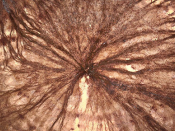Por Saskia Hogenhout (John Innes Centre - Norwich, UK).
Abstract: Phytoplasmas are obligate intracellular bacterial parasites of plants that induce dramatic changes in plant architecture, including for instance, proliferation of stems and branches (witches’ brooms) and the reversion of flowers into leaf-like structures (phyllody). These bacterial parasites cause economic losses of a diverse range of crops worldwide and predominantly depend on sap-feeding insects for transmission to plants. The ubiquitous Aster Yellows Witches’ Broom phytoplasma (AY-WB) produces the three effectors SAP05, SAP11, SAP54 that promote the degradation of plant SPL, GATA, TCP and MADS-box transcription factors, leading to changes in shoot formation timing and numbers, plant aging, branching, and leaf and flower development. The insect vectors of AY-WB are polyphagous Macrosteles leafhopper species. Interestingly, the three AY-WB SAPs also convert plants into more attractive hosts for egg laying and reproduction of M. quadrilineatus. Thus, phytoplasmas produce specific effectors that interfere with key plant developmental processes leading to dramatic changes in plant architecture. Moreover, these effectors promote insect vector reproduction rates thereby increasing the number of insects that then can transmit the obligate phytoplasmas to new host plants.













